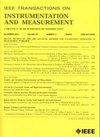Muscle Deformation Sensing for Swimming Mode Identification and Continuous Phase Estimation With Two-Stage Network
IF 5.9
2区 工程技术
Q1 ENGINEERING, ELECTRICAL & ELECTRONIC
IEEE Transactions on Instrumentation and Measurement
Pub Date : 2025-06-18
DOI:10.1109/TIM.2025.3580898
引用次数: 0
Abstract
Accurate recognition of human motion modes and continuous phases is crucial to exoskeleton control to provide proper assistance. However, harsh underwater environments severely restrict the study on swimming motion monitoring, where existing studies either focus on a single swimming mode or discrete phases, limiting underwater exoskeleton control. To address this limitation, this article develops a two-stage network (TSN) consisting of one mode classifier (first stage) and four phase regressors (second stage), where muscle deformation features are used instead of traditional joint kinematics. Swimming tests are conducted on nine subjects with four modes at three frequencies. The effectiveness of the proposed method is justified by mode identification accuracy of 99.72% and phase estimation error of 3.92%, where the error is 52.89% smaller than that in the traditional time-based estimation (TBE) method. This article is the first to simultaneously recognize the swimming mode and the continuous phase, which is valuable to adapt the smooth exoskeleton assistance to harsh underwater environment and multimodal motion scenarios.基于肌肉变形感知的两阶段网络游泳模式识别与连续相位估计
准确识别人体运动模式和连续阶段对外骨骼控制提供适当的辅助至关重要。然而,恶劣的水下环境严重限制了游泳运动监测的研究,现有的研究要么集中在单一的游泳模式,要么集中在离散的阶段,限制了水下外骨骼的控制。为了解决这一限制,本文开发了一个由一个模式分类器(第一阶段)和四个阶段回归器(第二阶段)组成的两阶段网络(TSN),其中使用肌肉变形特征代替传统的关节运动学。对9名受试者进行了3个频率、4种模式的游泳试验。模式识别精度为99.72%,相位估计误差为3.92%,比传统的基于时间估计(TBE)方法的误差小52.89%,证明了该方法的有效性。本文首次对游动模式和连续阶段进行了同时识别,对于使外骨骼平滑辅助适应恶劣水下环境和多模态运动场景具有重要价值。
本文章由计算机程序翻译,如有差异,请以英文原文为准。
求助全文
约1分钟内获得全文
求助全文
来源期刊

IEEE Transactions on Instrumentation and Measurement
工程技术-工程:电子与电气
CiteScore
9.00
自引率
23.20%
发文量
1294
审稿时长
3.9 months
期刊介绍:
Papers are sought that address innovative solutions to the development and use of electrical and electronic instruments and equipment to measure, monitor and/or record physical phenomena for the purpose of advancing measurement science, methods, functionality and applications. The scope of these papers may encompass: (1) theory, methodology, and practice of measurement; (2) design, development and evaluation of instrumentation and measurement systems and components used in generating, acquiring, conditioning and processing signals; (3) analysis, representation, display, and preservation of the information obtained from a set of measurements; and (4) scientific and technical support to establishment and maintenance of technical standards in the field of Instrumentation and Measurement.
 求助内容:
求助内容: 应助结果提醒方式:
应助结果提醒方式:


